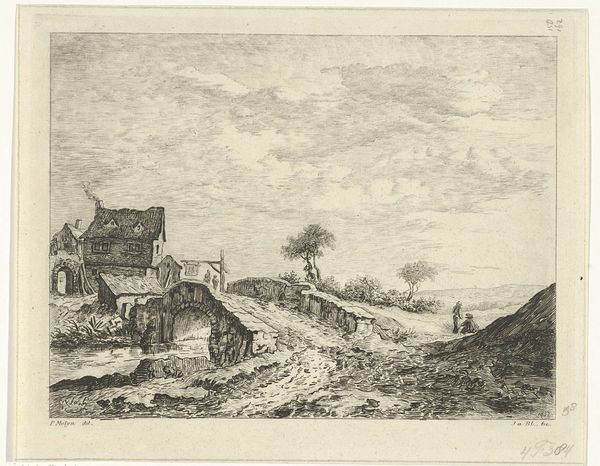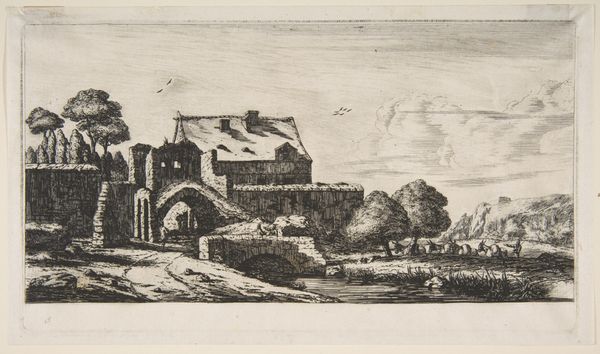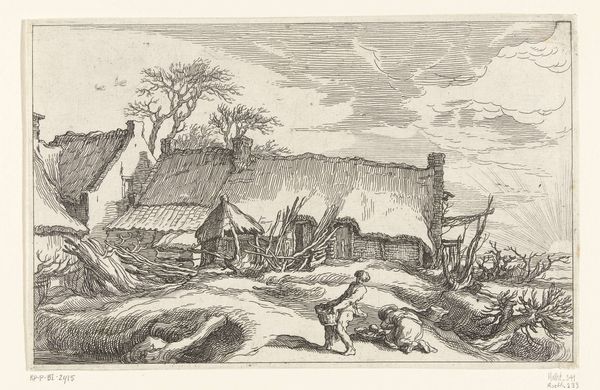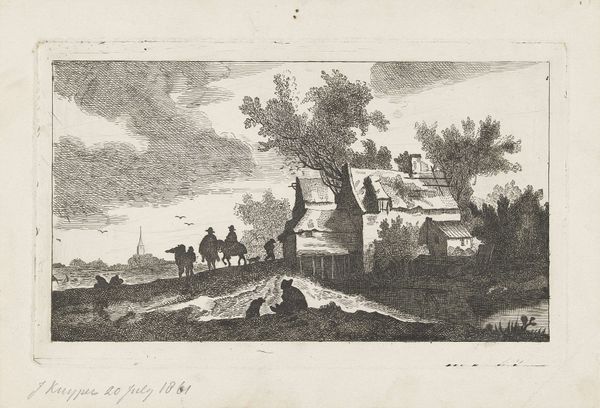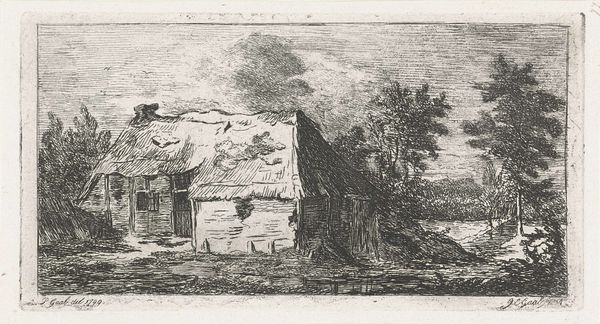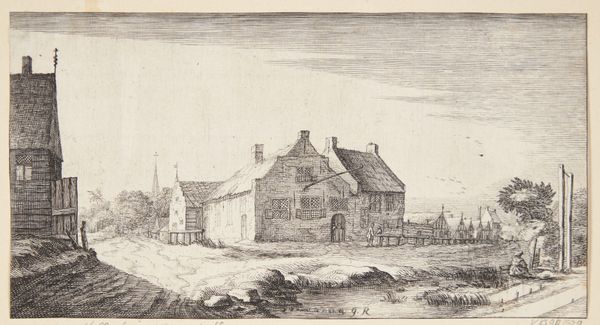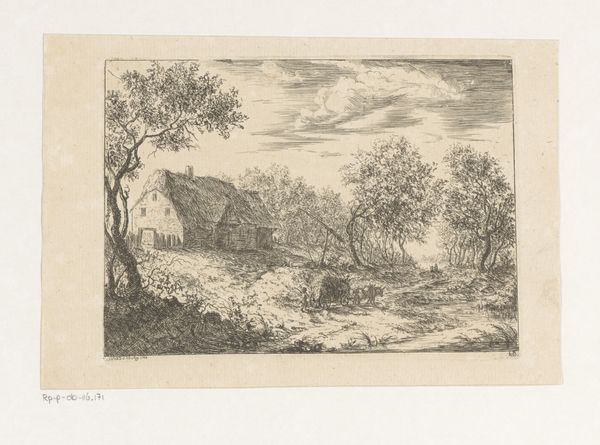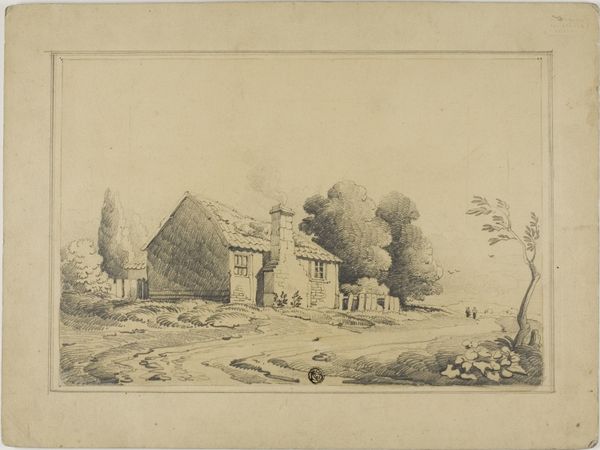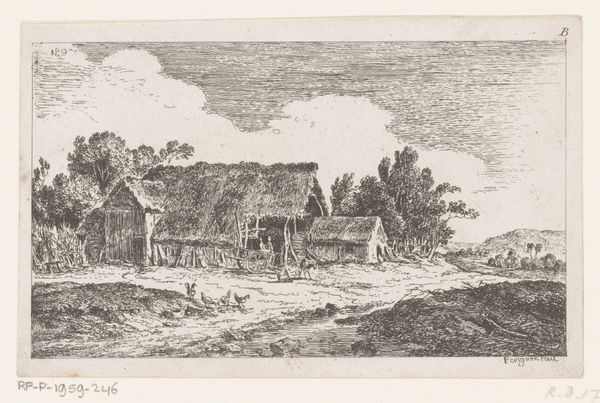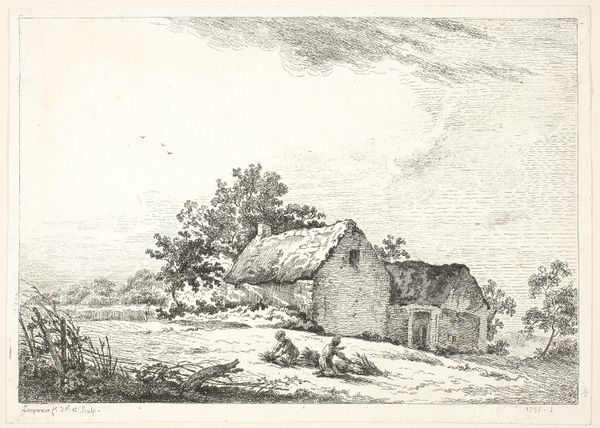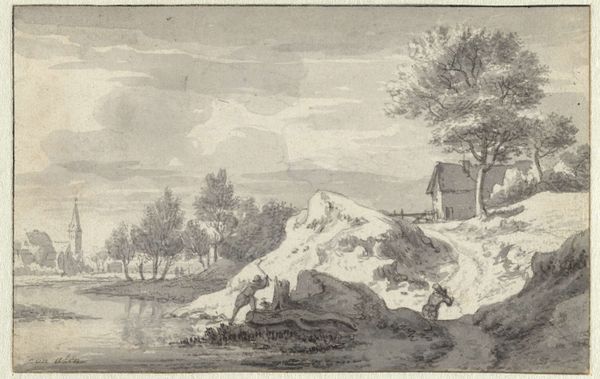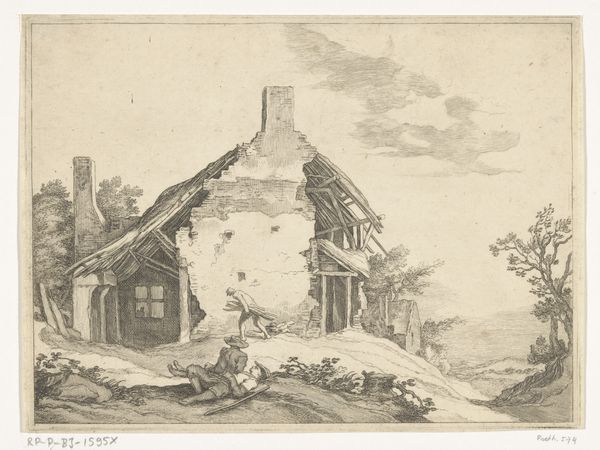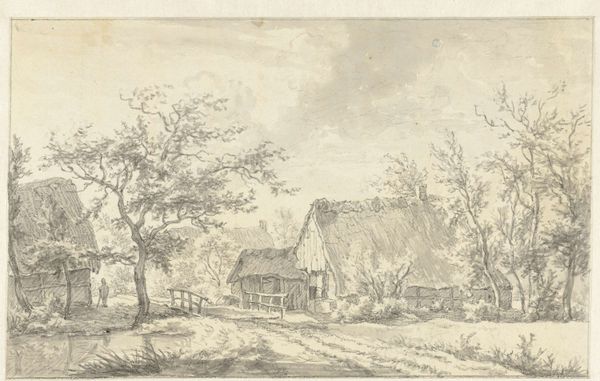
etching
#
dutch-golden-age
#
etching
#
landscape
Dimensions: height 162 mm, width 217 mm
Copyright: Rijks Museum: Open Domain
Editor: We're looking at "A Limekiln on a River," an etching by Frederick Bloemaert, created after 1647. It's a landscape, and it feels very grounded and gritty, capturing a specific moment in time and place. What stands out to you? Curator: It's precisely that "gritty" quality that resonates. Bloemaert’s depiction of the limekiln transcends a simple landscape; it unveils the labor inherent in shaping the Dutch Golden Age. How does understanding the social and economic underpinnings of the 17th century change your perception of this image? Editor: I guess I hadn't considered the social implications of something as seemingly mundane as a limekiln. What was its role in society then? Curator: Limekilns were crucial for mortar in construction – think of those grand Dutch houses and canals, but also as agricultural fertilizer. This wasn’t romantic countryside; it was a site of industry, of intense manual labour. Bloemaert isn't just showing us scenery; he’s documenting a landscape shaped by human need and intervention. How do you read the figures in relation to this labor? Do they seem idealized or more grounded in reality? Editor: Now that you mention it, they do seem very much part of the process. They're not just picturesque additions. Curator: Exactly! Bloemaert pushes us to confront the everyday realities often masked by the idealized landscapes of the Dutch Golden Age. What can a seemingly simple etching reveal about the lives and labour that underpinned the era's prosperity? Editor: That’s fascinating. I’ll definitely look at landscapes differently now, considering the layers of meaning beyond the purely aesthetic. Curator: Wonderful! Always question the dominant narratives and explore the silent stories within the frame.
Comments
No comments
Be the first to comment and join the conversation on the ultimate creative platform.
